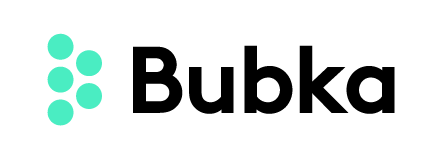In the dynamic realm of advertising, where art meets commerce, creative effectiveness stands as the linchpin of success. But what is creative effectiveness? It’s the delicate balance between advertising that captivates and compels and advertising that drives tangible business results. For advertising agencies, cultivating a culture that fosters this balance is paramount, not just for their survival, but for their clients’ prosperity.
1. Fostering a Learning Mindset
The first step towards creating this culture is fostering a learning mindset. The advertising landscape is constantly evolving, and what worked yesterday might not necessarily work today. Hence, agencies should encourage their employees to stay updated with the latest trends, technologies, and consumer behaviors. This doesn’t mean chasing every shiny object, but rather understanding the underlying shifts and discerning which ones are truly impactful. Experiment with AI, anyone?
2. Embrace Data without Losing the Human Touch
Data is undeniably a game-changer. It provides insights into consumer behavior, preferences, and pain points. But there’s a danger in viewing everything through a purely data-driven lens. The most effective advertising resonates emotionally, and while data can guide us, it cannot replace the human touch. Agencies should use data as a tool, not a crutch, and always ask: does this creative touch the heart as well as the mind?
3. Collaboration: Silos are the Enemy
In many agencies, there’s a historical divide between the ‘creatives’ and the ‘suits’. This division is archaic and counterproductive. For true creative effectiveness, everyone, from the copywriter to the account manager, should be involved in ideation and strategy sessions. By breaking down these silos, agencies can harness diverse perspectives, leading to campaigns that are both innovative and aligned with business objectives.
4. Celebrate Failures as Stepping Stones
No one gets it right all the time. Instead of stigmatizing failures, agencies should view them as invaluable learning opportunities. When a campaign doesn’t hit the mark, it’s crucial to dissect what went wrong and why. By fostering an environment where risks are encouraged and failures are seen as stepping stones, agencies can pave the way for groundbreaking work.
5. Aligning with Client Objectives
Clients don’t just want ‘cool’ ads; they want campaigns that drive results. Agencies must ensure they have a deep understanding of their client’s business objectives and design campaigns that are in sync with these goals. This alignment doesn’t stifle creativity; it merely focuses it, ensuring that the creative output is both captivating and effective in driving commercial impact.
6. Cultivate Psychological Safety
For creativity to truly flourish, team members need to feel safe to express their ideas, no matter how outlandish. Leaders should foster an environment of psychological safety, where every voice is valued, and there’s no fear of ridicule or backlash. Such an environment is fertile ground for innovative ideas that can transform into effective campaigns.
7. Regular Reflection and Feedback Loops
In the fast-paced world of advertising, it’s easy to jump from one project to the next without pausing to reflect. However, regular introspection is vital for continuous improvement. Agencies should institutionalize a system of regular feedback loops, not just at the end of a campaign, but at various stages of its development.
This involves bringing together cross-functional teams to review ongoing work, share feedback, and make course corrections. Additionally, feedback shouldn’t be limited to internal teams. Engaging clients and, where feasible, even target audiences in these feedback sessions can provide invaluable insights. This iterative approach ensures that campaigns remain on track to achieve both creative and commercial objectives, and it fosters a culture of continuous learning and adaptation.
By integrating regular reflection and feedback loops, agencies can refine their strategies in real-time, ensuring that their creative endeavors are always aligned with the ever-evolving landscape of consumer behavior and market dynamics. Bubka’s Responsible Growth Model® does all that.
Balance it out
In the end, a culture of creative effectiveness in advertising agencies is about striking the right balance. It’s about understanding that while creativity is the soul of advertising, its ultimate goal is to drive business results.
By fostering a culture that values learning, embracing data without losing the human touch, breaking down silos, celebrating failures, aligning with your objectives, cultivating psychological safety, and integrating reflection and feedback loops, we help you unlock your full potential as a marketer and deliver true marketing-driven commercial impact.


